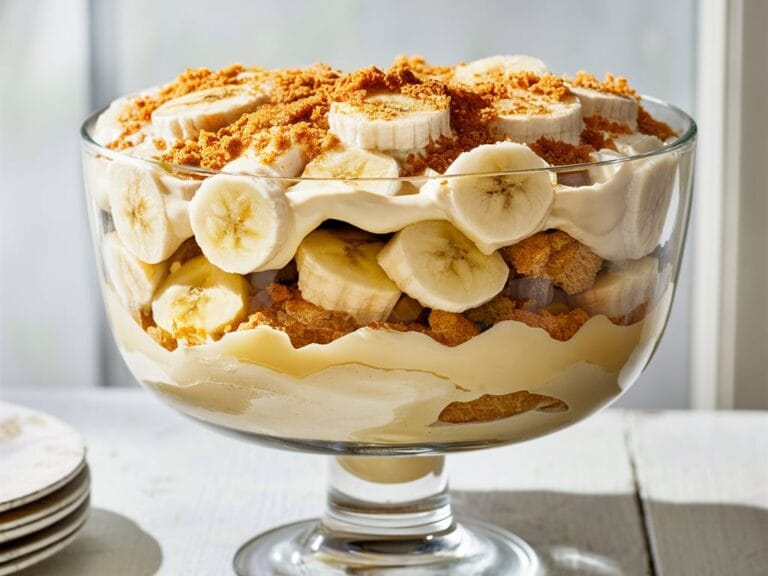How Healthy is Pizza for Breakfast?
Pizza for breakfast is not only a common guilty pleasure but also a topic of heated debate. While this popular meal is more commonly associated with lunch or dinner, it has slowly become an acceptable option for breakfast, especially among students, professionals, and busy parents. But the question remains—is pizza for breakfast healthy? And if so, what makes it a more viable option compared to traditional breakfast staples?
This article will delve deeply into the nutritional pros and cons of eating pizza in the morning, compare it to more conventional breakfast options, and provide strategies for making your pizza breakfast a healthier choice. Along the way, we’ll look at expert opinions, explore the cultural context, and offer alternatives for different dietary preferences.
Pizza vs Traditional Breakfast Foods: A Nutritional Showdown
Why Compare Pizza to Breakfast Staples?
Pizza isn’t traditionally seen as a breakfast food, but when compared to cereals, pancakes, and eggs, it might not be as bad as you think. Breakfast is often marketed as the “most important meal of the day,” but in reality, the nutritional quality of breakfast varies greatly based on what you eat. Popular breakfast items, particularly in Western diets, are frequently high in sugar, refined carbohydrates, and saturated fats—just like pizza.
Cereals, pancakes, waffles, and pastries, common breakfast items in the U.S. and Europe, may not be as healthy as their marketing suggests. But where does pizza fit in this context? Let’s break it down.
Pizza vs Cereal
Most cereals, even those marketed as “healthy,” are loaded with sugar, especially the ones aimed at kids. These cereals spike blood sugar levels and can lead to an energy crash within a few hours. According to Delish, pizza contains a better balance of fats, proteins, and carbohydrates, preventing the quick energy dip caused by sugary cereals.
Here’s a comparison:
| Nutrient | Average Cereal (per serving) | Pizza (per slice) |
|---|---|---|
| Calories | 150-200 | 200-300 |
| Protein | 2-4 grams | 9-12 grams |
| Fat | 1-2 grams (with skim milk) | 10-12 grams |
| Carbohydrates | 30-40 grams | 25-35 grams |
| Sugar | 10-15 grams | 2-5 grams |
As you can see, pizza contains significantly more protein, which is key for feeling fuller longer. Cereal, on the other hand, is often high in sugars and refined carbs that digest quickly, leaving you hungry soon after.
Pizza vs Pancakes and Waffles
Pancakes and waffles are beloved comfort foods for breakfast, but nutritionally, they’re mostly made of refined flour and sugar, providing a quick sugar rush but not much in the way of long-term energy. When topped with syrup, the sugar content skyrockets, providing little to no fiber or protein.
Pizza, however, provides a balanced mix of carbs, fats, and protein that make it a much more sustainable source of energy. The addition of vegetables and lean meats on top can also boost the vitamin and mineral content.
Here’s a quick comparison of these breakfast options:
| Nutrient | Pancakes (with syrup) | Waffles (with syrup) | Pizza (per slice) |
|---|---|---|---|
| Calories | 350-500 | 350-500 | 200-300 |
| Protein | 5-8 grams | 5-8 grams | 9-12 grams |
| Fat | 5-8 grams | 8-12 grams | 10-12 grams |
| Carbohydrates | 40-60 grams | 40-60 grams | 25-35 grams |
| Sugar | 20-30 grams | 20-30 grams | 2-5 grams |
As shown, pizza is more moderate in terms of calories and provides significantly more protein while keeping the sugar content low.
Pizza vs Oatmeal
Oatmeal is often considered a healthy breakfast option due to its high fiber content and low glycemic index, but it can lack sufficient protein unless you add nuts, seeds, or milk. Pizza, by contrast, has a higher protein content naturally due to the cheese and toppings like meats or veggies.
Here’s a comparison of basic oatmeal vs pizza:
| Nutrient | Oatmeal (plain) | Pizza (per slice) |
|---|---|---|
| Calories | 150-200 | 200-300 |
| Protein | 5-7 grams | 9-12 grams |
| Fat | 3-5 grams | 10-12 grams |
| Carbohydrates | 25-30 grams | 25-35 grams |
| Fiber | 3-5 grams | 1-3 grams |
While oatmeal offers fiber, pizza is far more balanced in terms of protein and fats. Adding toppings like peanut butter, seeds, or milk to your oatmeal can help boost its protein content, but pizza still provides a richer nutrient profile right out of the gate.
Other Common Breakfast Comparisons
- Toast and Jam vs Pizza: Toast with jam provides mostly simple carbs and sugars with little protein or fat, while pizza offers a more balanced macronutrient profile.
- Bagels with Cream Cheese vs Pizza: Bagels are dense in carbs and typically high in calories, while cream cheese provides a hit of fat without much protein. Pizza offers a more even distribution of carbs, fats, and proteins, with the added advantage of toppings like vegetables for vitamins and minerals.
The Nutritional Breakdown of Pizza
Calories in Pizza: How Much Should You Be Eating?
One slice of standard pizza typically contains between 200 and 300 calories, depending on the toppings. The crust contributes most of the carbohydrates, while the cheese provides fat and protein. Depending on the variety of pizza, these numbers can fluctuate.
For a healthier breakfast, you may want to stick to one to two slices of pizza to keep calorie intake moderate. This is comparable to a large bowl of cereal with whole milk or a stack of pancakes with syrup.
Carbohydrates and Energy Levels
The carbohydrates in pizza come primarily from the crust. While many pizzas are made with refined white flour, which has a high glycemic index and can lead to rapid spikes and crashes in blood sugar, opting for a whole-grain crust can provide more fiber and help sustain energy throughout the day.
Whole grains are also linked to various health benefits, including improved heart health, reduced inflammation, and better digestion. You can make or order pizza with a whole-wheat crust or even a cauliflower crust for a lower-carb option.
Proteins and Satiety
The protein in pizza comes from the cheese and toppings, especially if you add meat like chicken or lean ham. A single slice of pizza typically offers 9-12 grams of protein, which is comparable to a small serving of meat or a couple of eggs. Protein helps to keep you feeling full longer, so a slice or two of pizza could stave off mid-morning hunger pangs more effectively than many other breakfast options.
Some pizza varieties, like vegan pizzas, substitute dairy-based cheese with plant-based alternatives. These can still provide good amounts of protein, particularly if made with nutritional yeast or soy-based cheese.
Fats: Healthy vs Unhealthy
Pizza is often criticized for its high fat content, especially from cheese and fatty meats like pepperoni or sausage. While fat is an essential macronutrient, the type of fat matters. The cheese on pizza is primarily composed of saturated fat, which should be consumed in moderation due to its association with heart disease. According to the American Heart Association, limiting saturated fat intake can help reduce the risk of cardiovascular issues.
To reduce unhealthy fat intake, consider using:
- Low-fat cheese or reducing the amount of cheese used.
- Leaner meats, such as grilled chicken or turkey sausage.
- Vegetable toppings like spinach, peppers, and mushrooms, which are naturally low in fat but high in fiber and vitamins.
Additionally, if you’re making pizza at home, you can experiment with using olive oil as a healthy fat base for the crust or to drizzle over vegetables.
Vitamins and Minerals
Depending on the toppings, pizza can be a good source of vitamins and minerals:
- Cheese: Provides calcium for strong bones and teeth.
- Tomato Sauce: Rich in vitamin C and lycopene, an antioxidant linked to heart health and cancer prevention.
- Vegetable Toppings: Can add essential vitamins like vitamin A, K, and various B vitamins along with fiber.
Adding more vegetables to your pizza increases its overall nutrient density. Veggies like spinach, bell peppers, onions, and mushrooms are packed with fiber and nutrients while being low in calories.
The Potential Downsides of Pizza for Breakfast
Despite its potential benefits, pizza for breakfast does come with some downsides. Understanding these can help you make better choices when indulging in pizza as your first meal of the day.
High Saturated Fat and Cholesterol
Pizza’s primary sources of saturated fat are cheese and meat toppings. Consuming large amounts of saturated fat can raise LDL cholesterol (the “bad” cholesterol) and increase the risk of heart disease. Most health authorities, including the American Heart Association, recommend limiting saturated fat to less than 10% of your daily calories.
Healthier Alternatives:
- Use less cheese or opt for low-fat varieties.
- Choose lean meats like chicken, turkey, or even plant-based meat alternatives.
- Add heart-healthy fats like avocado or a drizzle of extra virgin olive oil.
Excessive Sodium
Pizza, especially frozen or restaurant-prepared varieties, can be very high in sodium. Sodium is essential for bodily functions, but too much of it can lead to high blood pressure, which increases the risk of heart disease and stroke.
The recommended daily limit for sodium intake is 2,300 milligrams, but most Americans consume far more than this, often unknowingly through processed foods like pizza.
- Cheese and processed meats like pepperoni and sausage are some of the highest sources of sodium in pizza.
- Choosing fresh, unprocessed toppings like vegetables and lean meats can help reduce sodium content.
Refined Carbohydrates
Most pizza crusts are made from refined white flour, which has been stripped of fiber and nutrients. This results in a food that spikes blood sugar levels and doesn’t provide sustained energy. Consuming too many refined carbs can lead to weight gain, increased blood sugar levels, and a higher risk of developing type 2 diabetes.
Healthier crust options include:
- Whole-wheat crust: Contains more fiber, which slows down digestion and provides a steady energy release.
- Cauliflower crust: Low in carbohydrates and a popular gluten-free alternative.
Portion Control: The Problem of Overeating Pizza
It’s easy to overeat pizza, especially if you’re eating it straight out of the box without portioning it properly. Pizza is delicious, but it’s calorie-dense, and eating too much in one sitting can lead to consuming far more calories, fat, and sodium than intended.
To avoid overeating:
- Stick to one to two slices, depending on the size of the pizza.
- Pair your pizza with a side of fresh salad or vegetables to increase fiber intake and help you feel fuller.
- Drink water or tea alongside your meal to avoid mindless eating.
The Benefits of Pizza for Breakfast
While pizza does have its downsides, it also has several advantages as a breakfast food, particularly when compared to more sugary and processed options.
Sustained Energy Levels
The combination of carbohydrates, fats, and proteins in pizza makes it a well-rounded meal that can provide sustained energy throughout the morning. Unlike sugary cereals or pastries, which cause a quick spike and subsequent crash in blood sugar levels, pizza’s balanced macronutrients offer a slower release of energy.
Carbs in the pizza crust provide fuel for your brain and muscles, while protein and fats help stabilize blood sugar and keep you feeling full.
Protein for Satiety
Protein is crucial for keeping you full and satisfied after a meal. Pizza, with its cheese and meat toppings, is rich in protein, making it more filling than other breakfast options like toast or cereal.
Research has shown that higher-protein breakfasts can help reduce hunger throughout the day and may even help with weight management by curbing the desire to snack between meals.
Balanced Macronutrients
One of the key benefits of pizza is its balance of carbohydrates, fats, and protein. This balance helps prevent the mid-morning slump that often comes after eating a breakfast high in refined sugars and low in protein.
This is one reason pizza can be a healthier alternative to sugary cereals and pastries, which may cause energy crashes and overeating later in the day.
How to Make Pizza a Healthier Breakfast Option
While pizza has the potential to be a nutritious breakfast, it’s all about how you prepare it. By making a few strategic changes, you can turn your favorite pizza into a well-balanced morning meal.
Choose a Healthier Crust
One of the simplest ways to make your pizza healthier is by choosing a more nutritious crust. The crust provides the bulk of the carbohydrates, so opting for a healthier base can significantly impact the overall nutritional profile of your pizza.
Options include:
- Whole-grain crust: Higher in fiber and nutrients than traditional white flour crusts.
- Cauliflower crust: A lower-carb, gluten-free option that’s rich in fiber and nutrients.
- Thin crust: Reduces the overall calorie and carb content of each slice.
Use Healthier Toppings
Pizza is highly customizable, which makes it easy to load it up with nutrient-dense toppings. Here are some options to consider:
- Vegetables: Adding a variety of vegetables to your pizza boosts its vitamin, mineral, and fiber content. Try spinach, bell peppers, onions, mushrooms, tomatoes, and even zucchini.
- Lean proteins: Instead of pepperoni or sausage, opt for grilled chicken, turkey, or even eggs for a protein-packed pizza.
- Plant-based proteins: For a vegetarian or vegan pizza, try adding tofu, tempeh, or chickpeas as your protein source.
Limit High-Fat Ingredients
Cheese is a staple on most pizzas, but it’s also a major source of saturated fat and calories. To make your pizza healthier, consider:
- Using less cheese or switching to a low-fat or plant-based cheese.
- Opting for a blend of part-skim mozzarella and feta, which has a bold flavor, so you don’t need to use as much.
- Experimenting with non-dairy alternatives like nutritional yeast for a cheesy flavor without the fat.
Portion Control
The key to making pizza a healthy breakfast is portion control. Instead of eating several large slices, stick to one or two slices and pair them with a side of vegetables or a salad. This will help you feel full without overloading on calories.
For an extra nutrient boost, consider pairing your pizza with a side of fresh fruit or a green smoothie to add fiber and vitamins.
Cultural Acceptance of Pizza for Breakfast
In the United States, pizza is often associated with lunch or dinner, but eating pizza for breakfast has gained popularity in recent years, particularly among younger generations. Pizza’s convenience, availability, and variety make it an appealing choice for those on the go.
The College Student Breakfast
Pizza for breakfast is practically a rite of passage for college students. Leftover pizza from the night before is often the easiest, quickest option for busy students heading to class or studying late into the night. While this may not be the most nutritious choice, it highlights pizza’s versatility and appeal across all meals.
Pizza as a Global Breakfast Option
Pizza’s cultural status varies across the world, and in some countries, it’s not uncommon to see pizza served for breakfast. For example, in Italy, breakfast pizza—or pizzetta—is a common morning snack, often topped with tomatoes, mozzarella, and olive oil. In other parts of the world, breakfast pizzas are customized with local ingredients, such as eggs, avocado, or smoked salmon.
This cultural shift toward pizza as a breakfast food reflects changing eating habits, especially in Western countries, where the lines between breakfast, lunch, and dinner are becoming more blurred.
Frequently Asked Questions: Pizza for Breakfast
Is pizza healthier than cereal for breakfast?
Yes, pizza can be healthier than most sugary cereals. Pizza contains a balanced mix of carbohydrates, fats, and proteins, which can provide more sustained energy than the sugar spike followed by a crash that you often get with cereal.
How much pizza is considered a healthy portion for breakfast?
To keep your pizza breakfast within a healthy range, stick to one or two slices of pizza, depending on the size and the toppings. Pair your pizza with a side of vegetables or fruit to increase the meal’s fiber content.
Can pizza provide long-lasting energy for the morning?
Yes! Pizza’s balance of carbohydrates, protein, and fats makes it a good source of sustained energy. Unlike sugary breakfasts that cause energy crashes, pizza provides steady energy throughout the morning.
Is cold pizza a healthy option for breakfast?
Cold pizza is just as nutritious as hot pizza, though some may prefer the taste and texture of reheated pizza. The important thing is to focus on the pizza’s nutritional content—if it’s packed with veggies and lean proteins, it can make for a balanced breakfast.
Can you eat pizza for breakfast every day?
While pizza can be part of a healthy breakfast occasionally, eating it every day isn’t recommended due to its high fat and sodium content. To make it healthier, choose nutritious toppings, control portion sizes, and enjoy pizza in moderation.
Conclusion: Is Pizza a Healthy Breakfast Option?
While pizza may not be the first thing that comes to mind when you think of a healthy breakfast, it can certainly be a nutritious option when prepared thoughtfully. By choosing whole-grain or cauliflower crusts, adding plenty of vegetables, and controlling your portions, pizza can fit into a balanced diet.
When compared to sugary cereals, pancakes, and pastries, pizza provides a more balanced mix of nutrients that can keep you feeling full and energized throughout the morning. So the next time you’re tempted to grab a slice for breakfast, rest assured that it’s not the worst decision—especially if you make a few healthy tweaks.







